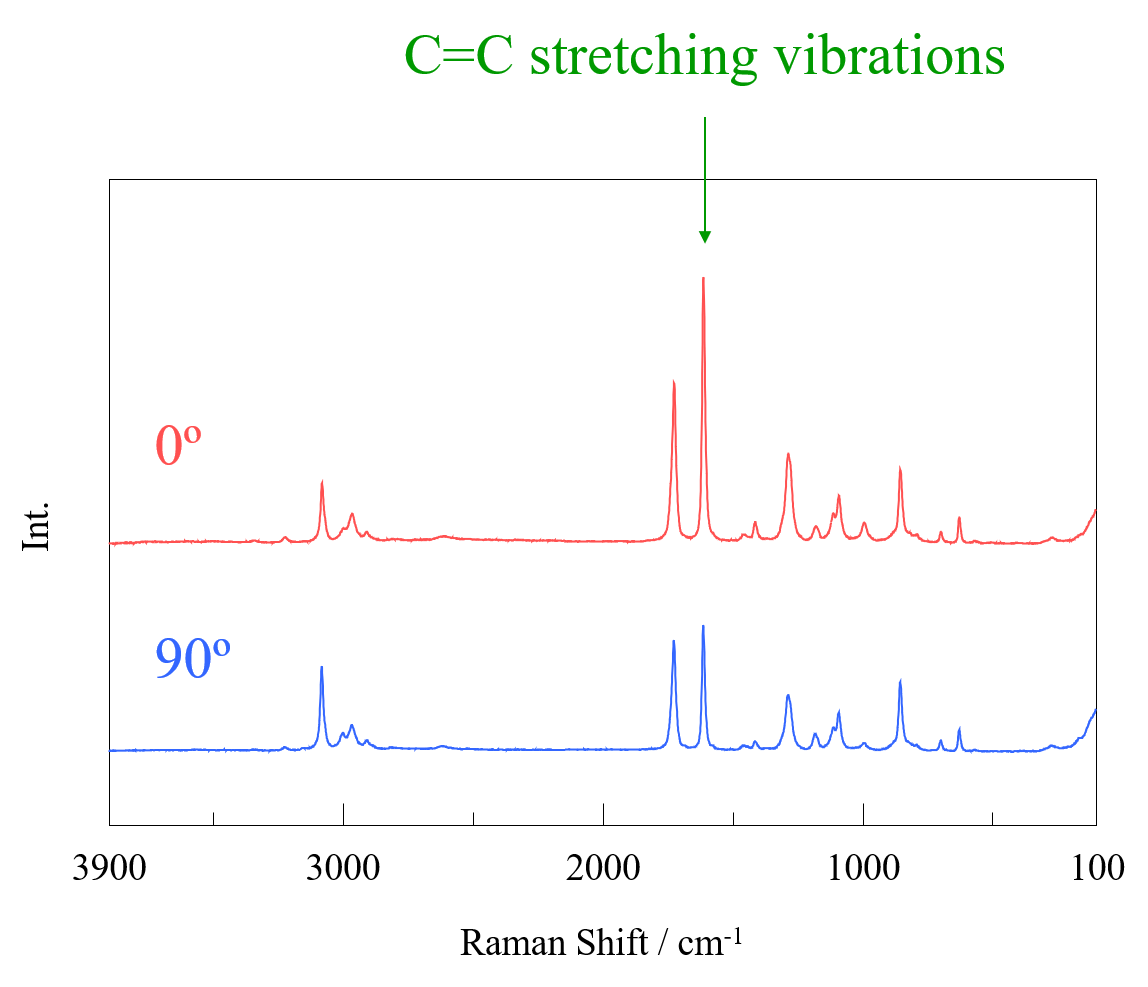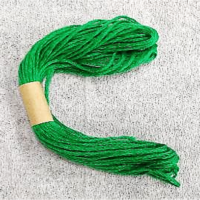Introduction
Polarized Raman microscopy is capable of non-contact and non-destructive measurements and analyses of samples, and can be used to evaluate polymer chain orientations. To accurately evaluate the orientation of polymer chains, it is important to measure the same point following sample rotation. The rotation positioning function*1 using the angle scale engraved on the disk part (disk part is separately provided as iQ Frame*2*3) is a powerful tool for this purpose. The micro vice holder manufactured by JASCO, which offers a rotational positioning capability for use with JASCO iQ Frame, can be used to hold samples that are difficult to place horizontally, or to examine the orientation of polymer chains for film or fiber samples when they are being stretched. (Figure 2).

Fig. 1 Micro vice holder

Fig. 2 Example of practical use of micro vice holder
In this article, we describe orientation analysis results for a polyethylene terephthalate (PET) film when it is stretched, using a polarized Raman microscope and the rotational positioning function.
Experimental
<Procedure>
1.Holding: Place a PET film in the JASCO micro vice holder.[Tension: 0 mm (None)]
2.Measurement (1): Rotate the sample (15° steps, 360° rotation range) using the angle scale on the disk, fix the misalignment for the measurement position using the rotational positioning function, and then measure the same sample position at each angle.
3.Stretching: Stretch the PET film by 2 mm using the scale on the micro vice holder. [Tension: 2 mm]
4.Measurement (2): Measure the sample as described for measurement (1).

Fig. 3 Laser polarization direction and film-stretching direction
<System and Conditions>
Instrument: NRS-4500 Raman spectrometer
Ex wavelength: 532 nm
Objective lens: Long W.D. 20x
Exposure time: 3 sec
Accumulations: 2 times

Fig. 4 NRS-4500 Confocal Raman spectrometer
Keywords
Polarized Raman Analysis, Film, iQ Frame, Micro vice holder
Results
The height of the peak associated with C=C stretching vibrations indicated by the arrow in the spectrum in Figure 5 was used to evaluate the orientation of polymer chains for a PET film, since this peak is closely related to the degree of polymer orientation.

Fig. 5 Spectra at 0° and 90° for 2-mm stretched film
Figure 6 shows the results of plotting the height of the peak associated with C=C stretching vibrations at different angles in polar coordinates for an unstretched film and a film stretched by 2 mm. It was found that the original elliptical shape of the plot became narrower following stretching, and the peak height increased at 0° and 180°. Therefore, it can be assumed that the polymer chains in the PET film become more oriented with respect to the stretching direction. The changes in orientation due to stretching can be verified using the JASCO micro vice holder.

Fig. 6 Peak height plot
Conclusion
Combining the JASCO polarized Raman microscope, and the micro vice holder with a rotational positioning function and which is capable of holding specimens of various shapes, the degree of orientation of polymer chains for a film under different stretching conditions could be evaluated while accurately measuring the same position in the sample. The micro vice holder allows samples that are difficult to place horizontally to be held securely and horizontally. The combination of hardware such as the JASCO Raman microscope and sample holder with software such as a measurement program will enable the evaluation of polymer chain orientations for films and fibers made of various polymers such as polyethylene and polypropylene with high accuracy.
References
*1: Raman application data: 030-AN-0024
*2: https://www.jasco-global.com/solutions/qualitative-analysis-of-multilayer-film-for-food-packaging-using-iq-frame/
*3: Raman application data: 100-AN-0016






